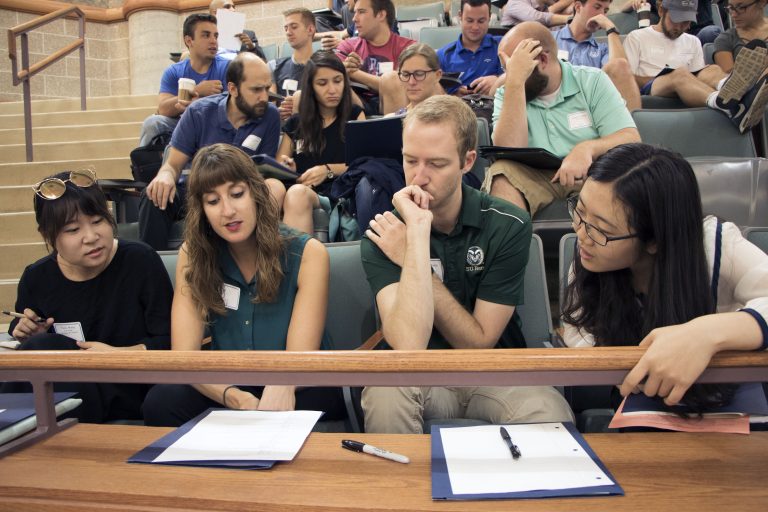Here’s a thought to start the semester with:
Education offers only a blueprint. Learning takes place in the application.
If that sounds familiar, it should. It lies at the heart of active learning, an amalgam of practices that that moves education beyond the mere delivery of information. It’s an approach that improves student learning, especially among underserved students, and helps make teaching more engaging for instructors and students.

In short, it’s an approach we should use in all our classes.
I’ve found that a university’s newest instructors – graduate teaching assistants – understand that. They are, after all, successful students in their own right, having been both participants in learning and observers of teaching for many years.
I’ve also found that most new GTAs have a good sense of how to approach teaching. They lack experience, of course. They need guidance, of course. They also need reassurance, support, and training. They want to succeed as teachers, though, and they are willing to put in the time and effort to help the students they work with succeed.
Evidence of that attitude can be seen in the distillation of active learning at the beginning of this post. It came from a recent session with new GTAs. In that session, I shared some thoughts about teaching before breaking students into groups. Within those groups, the participants – most of whom had yet to teach their first class – considered these questions:
- What is a teacher?
- How do we create an environment that encourages learning?
- As instructors, how to we help our students learn how to learn?
- What are the biggest challenges we face in accomplishing that?
In those discussions, the teaching assistants talked about the importance of displaying interest and enthusiasm in the course material, encouraging students, providing concrete examples, personalizing assignments, creating a safe environment for sharing ideas, removing obstacles to learning, promoting interaction in groups, and modeling vulnerability. One group also brought up the importance of the teacher as learner, as someone who aspires toward constant improvement.
There was no way to work through those questions – or the responses – thoroughly in an hour-long session, but I wanted the new GTAs to contemplate the important role they were taking on.
GTAs will return for similar follow-up sessions in the coming weeks. Those sessions will again offer time for reflection, support, advice and assistance in teaching. Participants will also get an opportunity to add detail their own blueprint of education.
They need much more than that, though. Good teaching doesn’t come from a handful of sessions on pedagogy and strategy and philosophy. It builds slowly from planning and reflection, listening and evaluation, adjustment and assessment, and then more planning and reflection.
Some GTAs come from departments that will help them gain those skills. Others, unfortunately, work in departments that see little value in high-quality teaching and provide little support for instructors. Some of those GTAs who receive support and encouragement will go on to become great teachers. Others will be swallowed by a culture hostile to change and hostile to the reality that learning requires more than the mere memorization of facts.
And so every academic year begins with grand hopes for renewal, with encouraging signs that higher education will indeed embrace the idea of application. It also comes with a sobering reality that we need to do so much more.
A fascinating map of student migration
The New York Times offers a fascinating look at the geographic shift of students who attend public universities. A series of maps shows the number of students who have left each state and those who have moved to a different state to attend a public college or university.
That number is substantial. Over the last 30 years, The Times reports, the number of out-of-state freshmen at public universities has nearly doubled. That shifting geography is a result of budget cuts that have made in-state tuition more expensive, and financial aid packages that public universities have offered to bring in more out-of-state students.
Kansas showed a net gain of 1,290 students to its public universities. Other states didn’t fare so well, with California, Minnesota, Texas, Illinois and New Jersey among the states with the largest losses.
Doug Ward is the associate director of the Center for Teaching Excellence and an associate professor of journalism. You can follow him on Twitter @kuediting.
Tagged active learning, future of higher education, reflective teaching, GTA conference